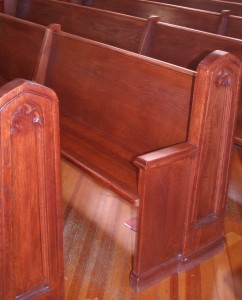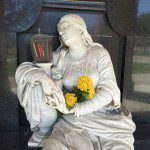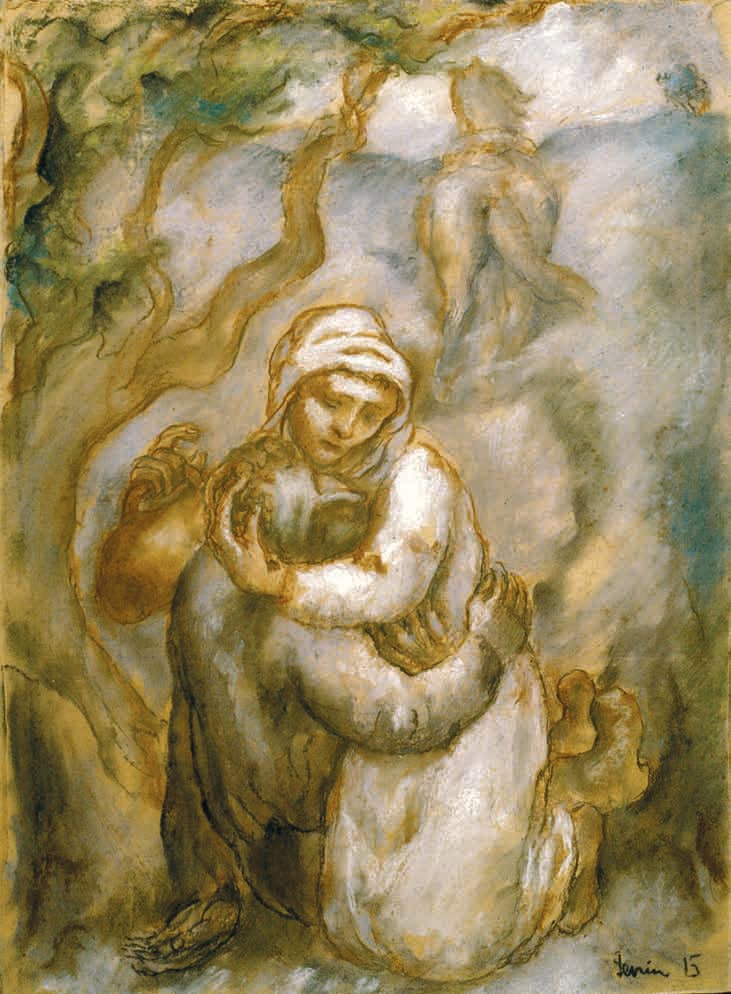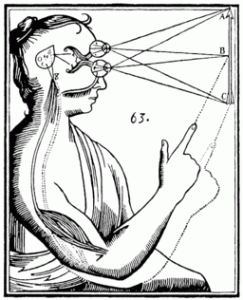You may recognize part of today’s post, which grew out of some ruminations I wrote last month after visiting the Spertus Institute of Jewish Studies in Chicago. This post is also my monthly column for the Episcopal News Service, which you can read here or below:
Sometimes a seemingly minor encounter with another religious tradition can serve as a beam of light illuminating something within one’s own faith. I had that experience recently when I visited the Spertus Institute of Jewish Studies in Chicago.
The institute’s striking, post-modern building is an architectural wonder, but it was an item in its historical collection that caught my eye. On a shelf stood an ornately carved chest, which I learned was a synagogue place marker for the Vilna Gaon, an 18th-century Talmudic scholar who lived in Vilnius in Lithuania.
“Gaon” means “genius,” a reflection of the man’s formidable intellect. The Gaon believed that in order to understand Torah, one also needed to understand worldly subjects, and so he became learned in medicine, astronomy, and mathematics. Though he never became a rabbi, never held a public post, and never published any of his writings during his lifetime, he was renowned throughout Europe for his wisdom.
After his death, the people of his synagogue wanted to create a memorial to him, but synagogues are prohibited by religious law from including images of human beings. So they created a chest that hung over his place in the sanctuary to keep anyone from sitting in his seat — an outward recognition of the fact that no one could take his place in their hearts.
That antique chest made me smile, for I felt a sense of kinship to what it represented. While I don’t know anyone as brilliant as the Vilna Gaon (for truly he was a phenomenon rare in any religious tradition), I felt an instant affinity to the idea of an individual’s place in a worship space being reserved for them.
If your church is like mine, you probably have many people who always sit in the same place every week. When my kids were small, my husband and I always staked out a pew near the back of the sanctuary, so that their flying Cheerios and loud voices weren’t quite so noticeable. Now that I’m ordained I sit in the chancel, but it still amuses me to see how people return to their usual spots, week after week, as if they have assigned seats and will be counted absent if they’re not in that exact pew.

It’s not such a bad practice, really, for it means that someone’s absence tends to get noticed. Because of that regularity of seating, you often realize when someone’s on vacation or when they have stopped coming altogether. And of course that empty seat has its most eloquent and poignant meaning after someone has died. On the first Sunday after the funeral, their customary pew seems forlorn. I can understand why the people of the Gaon’s synagogue wanted to make sure that no unthinking stranger would claim a spot that held so many memories for them.
We live in a society that is increasingly transient, a trend felt even in our churches, and many of us worship in buildings too large to claim a pew in the sanctuary as uniquely ours anyway. But perhaps something is missing when we don’t have that familiar spot. Like our favorite reading chair at home, it’s a place we can return to again and again, and something in that very repetition brings comfort.
The story of the Vilna Gaon raises as well the question of what is the proper way to mark someone’s absence. A marble gravestone, a bronze plaque on a columbarium niche, a folded flag displayed in a box? The loss of those we love always takes a part of our hearts, and these outward symbols in a synagogue or church are a reflection of an interior reality. In my own church, I think of the recent losses of Carolyn, she of the wide smiles and warm hugs, and Rusty, lover of English teas and high church. Their places now are empty, even though someone else may sit in them come Sunday morning.
I won’t carve an ornate chest for them, as the followers of the Vilna Gaon did for their beloved teacher, but their places in my heart are nonetheless reserved.











